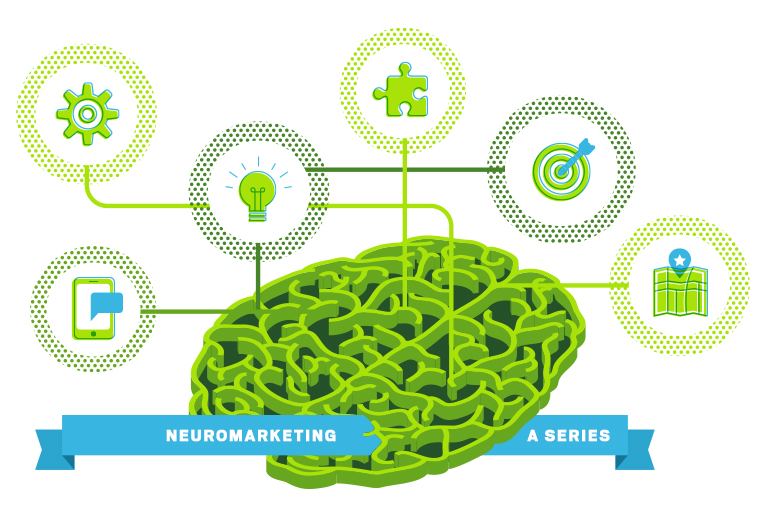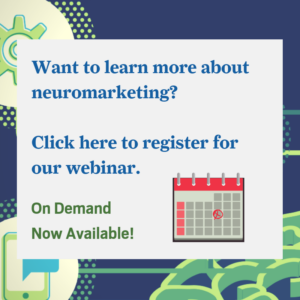“I wish I could read the minds of my wish list clients and know exactly what they were looking for. Then I would build my marketing strategy around that information.” This was something a client once said to us. He was an extremely successful founder of a health and technology business with clients and partners around the world and yet he still knew that his marketing strategy was not all it could be.
The critical element he was missing? Target audience insights.
Target audience insights go beyond market research reports and demographics. These insights capture the emotions that drive the search for your product or services. They showcase the keywords, key phrases and visuals that capture the eye of your target audience as they search online. They provide the foundation for the stories you will create and share in the form of ad copy, testimonials and presentations.
As such, storytelling is an important marketing skill. Look at this example: You’ve probably attended conferences and industry events where the majority of speakers were incredibly dull. But every so often there is an outlier. Someone who knows how to draw people in to their stories, in to their presentations and in to their research. These people make science, their products and their services come to life. Some people are natural storytellers, yes, but there are real tactics for marketers to ensure that they are the outlier in the field, the person who can draw in the entire room.
How do you ensure this? Enter neuromarketing. Take your target audience insights and mix them with neuroscience to create a combination that will engage the brain. Engaging the brain helps you stand out from the crowd, and helps your audience remember you and your message.
Over the next four posts, we will be working with Jennifer Arnold, who holds a M.Sc. in pharmacology and a Ph.D. in neuroscience, to build up your target audience insights, create a client persona (a representation of the decision maker you are targeting) and put your collected insights to work within a neuroscience-enhanced marketing strategy.
We will be working with you on different parts of the Persona Builder Guide throughout the blog series. Our goal is to get neuroscience working for you so you can meet your marketing and business objectives. First, here is a brief primer:
Brains Love Targeted Marketing
Neuroscience expertise applied to marketing is called neuromarketing. Some neuromarketers focus primarily on responses to marketing stimuli triggered within the brain – responses the person is not even aware of. Other neuromarketers are not as focused on capturing the physiological response of the brain as they are on the cognitive psychology underlying the “buy” response. Those neuromarketers want to understand the processes that impact purchasing a product or service – processes such as memory, problem solving and attention.
This is all great information to have when designing your marketing strategy but well out of the financial reach of most small to medium sized business owners. What is really needed is a way for our to take the best practices and established data points of neuromarketing and distill them down to four easy steps.
Over the course of this neuromarketing series, we will cover those steps:
DEFINE your target audience
CREATE your personas
DESIGN your marketing strategy
CAPTIVATE your clients, strategic partners and potential investors
How Neuromarketing Tactics Will Affect Your Target Audience
Before we get to defining your target audience in our upcoming post, it’s important for us to talk about how neuromarketing will work with your target audience. Regardless if you are in science marketing or another field, the main component of your target audience will always be clients, the ones you already have and the ones you want. However, who else do you need in order to build a successful business? How about strategic partners, industry associations, investors or regulators? There are groups above and beyond our clients that are essential to the long-term success and growth of your business. So while incredibly important, don’t make the mistake of building your entire marketing strategy around clients and clients alone.
To complicate matters, each one of the groups making up your total target audience needs something different from you in order to build a strong and lasting relationship with your business. There is no effective “one size fits all” approach to marketing.
Being in the science world, we’d like to think that a rational approach can be taken to anything; however, neuromarketing studies have consistently shown that decision making is an emotional process. The effectiveness of your marketing strategy rests on a series of small decisions taken by your target audience each and every day, including:
- staying on the website or clicking back to keep searching
- opening an email’s special offer or deleting it
- downloading your product’s informational booklet or moving on
- engaging your company or sales team for services or not moving forward
Too often the marketing assets and promotional materials created by science-based companies are all about bar graphs and data readouts. All the statistics and graphs in the world are not going to build a relationship between you and the decision maker you want to connect with. Your data points will help to seal the deal once you have their attention, but first you need to get their attention and then persuade them to give you their precious time.
As mentioned, the best way to grab and hold the attention of the brain is make a fast and emotional connection, and this is exactly where your target audience insights become essential. You need to personalize your marketing content so that each asset you create – ads, pamphlets, white papers, presentations, case studies, and so on – is tailored specifically to your defined groups of potential clients, strategic partners or investors.
Each of the three groups you have to consider have different needs and emotions that would drive them to build a business relationship with you:
Potential clients are frustrated and looking for a solution to a problem you can solve.
Strategic partners are cautious and searching for a mutually beneficial synergistic relationship.
Investors are savvy and hunting for the next big thing.
A single marketing message is not going to connect with your whole target audience. Instead, grab and engage the attention of the brain by tailoring the marketing assets you have already created with keywords, key phrases, emotions and visuals that are unique to each of your defined groups. Where to start? These insights into your target audience come from a combination of online research, short interviews and neuromarketing best practices.
The insights and in-depth knowledge of your target audience will be collected as we work on your Persona Builder Guide, a new tool we’re developing along with this series. It will become the foundation of the relationship between you and your audience. Target audience insights give you the words and phrases to answer their questions and the ability to persuade them using their own language and their own expressions. The personification of these insights become your personas – the representation of the decision maker you are trying to connect with as you design your marketing strategy. Your personas will guide the design of your marketing strategy and the fine-tuning of your marketing assets as you personalize them to each defined group.
Adding this personal element is ultimately what captures and holds the attention of the brain. This is how you become the outlier in your industry with the products and services that come to life.
Start Connecting With Your Target Audience
We have a host of other resources for you as well, including a special webinar now available on demand, a presentation from our Science Marketing event, and finally, the release of our special Persona Builder Guide so you can roll up your sleeves and get to work. The guide is designed to walk you through step-by-step how to add neuroscience insights to your current marketing strategy, with the added bonus of real case studies to illustrate how effective these insights become in the real world.
Ready to continue the blog series? Click here for Step 1!
About the Author

Dr. Jennifer Arnold, Ph.D. |
Founder of InnovaMap
Jennifer has a M.Sc. in pharmacology and a Ph.D. in neuroscience. She has over 20 years of experience in research and the biotechnology field. Before starting a neuromarketing firm, Jennifer worked for a biotechnology company and with an intellectual property law firm. Jennifer’s passions are strategic marketing, course creation, data analysis and all things neuroscience.



















